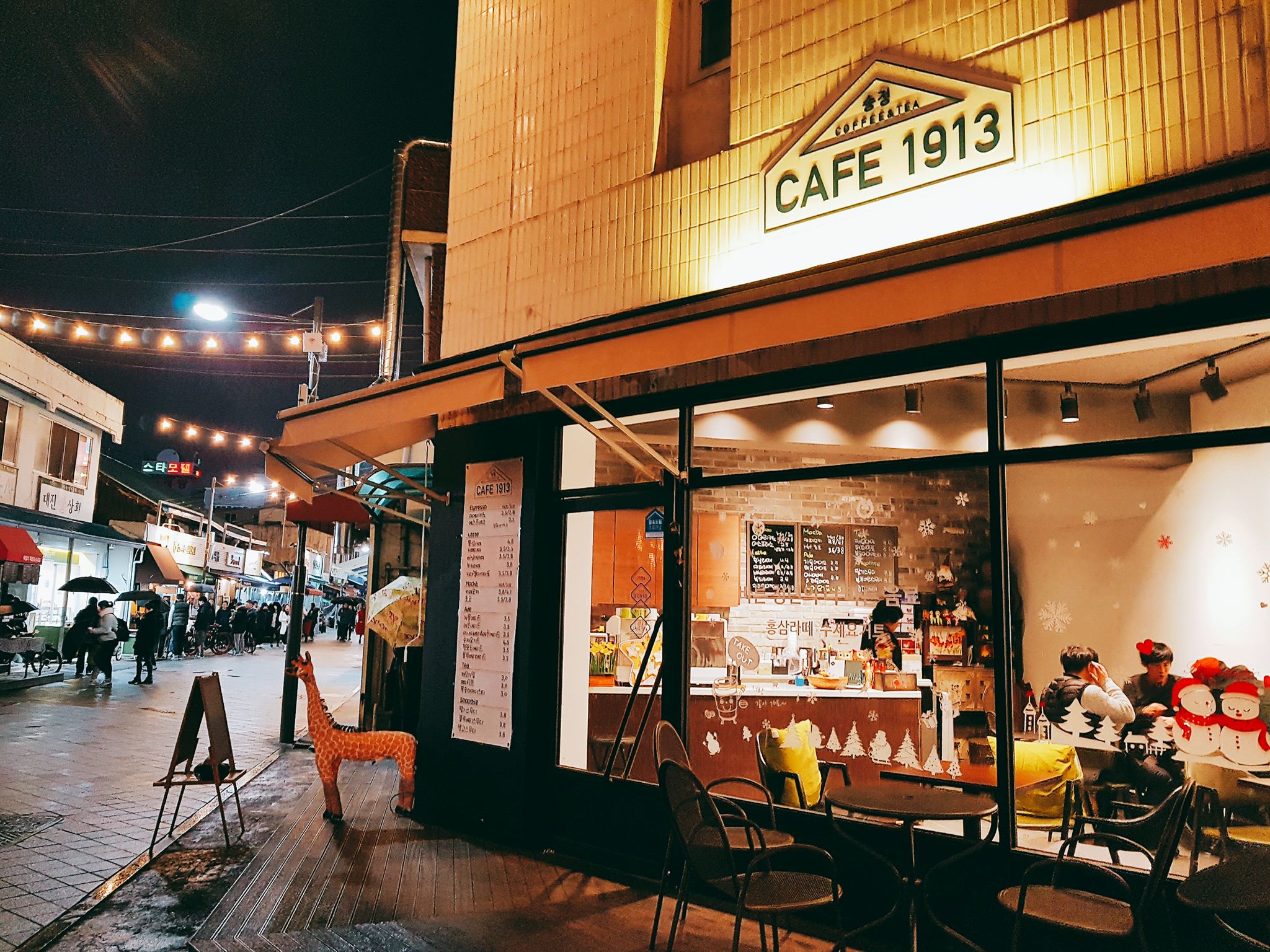Songjeong Surprise: 1913 Songjeong Market
Photos by Kelsey Rivers and Kim Jin-young
In Gwangju, Songjeong is a short street with a long history. The vibe is mellow; the people move at a slower pace. Couples pause to take selfies, and parents gather children and grandchildren together for one last photo. Independent coffee shops, mom-and-pop restaurants, and specialty stores settle against each other.
Originally started in 1913 as the Songjeong Yeokjeon Maeil Market, the 170-meter-long street has acted as Songjeong’s market for the past 100 years. In recent times, however, the market began to close up as people left. Then in 2015, things began to change when the Gwangju Center for Creative Economy and Innovation, and Hyundai Card, saw potential in the little market.
The 1913 Songjeong Market does not have the history of Yangdong nor the location of Daein, and unlike more well-known Gwangju markets, the 1913 Market is open-air. There is a collection of coffee shops, restaurants, food stores, and a pub, but no roof covers the street. Many of the businesses have been there for years, while others are recent arrivals.

For many in Gwangju, the market is relatively unknown. When asked about the market, most did not know about it, or responded with, “I have heard about it, but I have not been there.” Even those who live in Songjeong have yet to rediscover the market.
“My children have brought food home from there, but I have not gone yet,” one woman from Songjeong said in a coffee shop across from the market’s entrance. “They said it is nice.”
Walking down the street, a line of people forms outside Ttoa Bread, known for its delicious loaves. Sometimes the line is short; other times, it winds down towards the center of the market. Get there early for the famous bread, or miss out.
On the far end of the market is a place selling street food with pork, vegetables, and kimchi wrapped in bacon. It comes in two versions, spicy and mild. The spicy one hits the back of the mouth, whereas the mild has a sweet barbeque-style sauce. Both are tasty!


Walking back to the entrance, on the left is Hankki Ramen, specializing in ramen from different countries. If kimchi and ramen are not your thing, the Wheat Field Brew Pub near the center of the market offers craft beers and pub food.
A couple coffee shops dot the street. One, the 1913 Café, has a large window to people-watch from, while another, Mimi’s Bagels, offers rice-based bagels and ricotta cheese spread.
Acting as an outdoor waiting area for the KTX, the market has a schedule board for the KTX halfway down the street. With plenty of places to stop and eat, it is a good meeting area for those coming and going on the train.
To arrive at the 1913 Market, the easiest way is to take the subway to the Gwangju Songjeong stop (two beyond the airport) and take Exit 2. At the top of the stairs, turn left, walk back to the intersection, and turn right. Follow the people, for many of them are entering the market.



